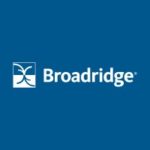In other news, Bloomberg scores more buy-side clients, Aviso Wealth turns to Broadridge, and FASB pushes hedge accounting changes.
FIX Trading Community Partners with Global DCA
 The FIX Trading Community, a standards body for transacting securities via the electronic Financial Information eXchange (FIX) protocol, will be working with the Global Digital Asset and Cryptocurrency Association (Global DCA) to create standards for trading digital assets, officials confirm.
The FIX Trading Community, a standards body for transacting securities via the electronic Financial Information eXchange (FIX) protocol, will be working with the Global Digital Asset and Cryptocurrency Association (Global DCA) to create standards for trading digital assets, officials confirm.
Both groups “recognize that their complementary efforts can be strategically combined” to promote the trading of digital assets, officials say. “The organizations have therefore agreed to share information and experience to achieve their common goals.”
The FIX Trading Community’s Digital Asset Working Group (DAWG) has been focused on FIX for the electronic trading of digital assets. The DAWG co-chairs also participate in ISO TC68/SC8/WG3 in the development of other standards for this industry,” according to FIX Trading officials. “The Global DCA was established to guide the evolution of digital assets, cryptocurrencies, and the underlying blockchain technology within a regulatory framework designed to build public trust, foster market integrity, and maximize economic opportunity for all participants.”
The FIX Trading Community DAWG and Global DCA will focus on “standards for the entire life cycle of the electronic trading of digital assets from buy-side, sell-side, exchanges/trading venues, settlement/custody, and regulatory compliance/reporting,” officials add.
The Global DCA is a self-regulatory association for the digital asset and cryptocurrency industry whose membership includes spot and derivative exchanges, proprietary trading firms, traders, investors, asset managers, brokerage firms, FCMs, custodians, decentralized technology organizations, banks, legal firms, audit firms, insurance professionals, academics, consultants and media, officials say.
Bloomberg Onboards 100+ Buy-Side Firms
 Market data and trading systems vendor Bloomberg has remotely onboarded more than 100 buy-side firms globally for its buy-side solutions during the pandemic, between March 2020 and 2021, officials say.
Market data and trading systems vendor Bloomberg has remotely onboarded more than 100 buy-side firms globally for its buy-side solutions during the pandemic, between March 2020 and 2021, officials say.
“Clients were onboarded across the Americas, EMEA and APAC, and include Lombard Odier Asset Management, Union Investment, Global X Japan and Harvest Fund Management, among others,” according to Bloomberg officials. “Bloomberg’s global implementation teams worked in partnership with client firms to establish the necessary connectivity and integration, overcoming challenges presented by the remote work environment.”
The Bloomberg Buy-Side Solutions include its Asset & Investment Manager (AIM) and PORT Enterprise solutions, officials say. The solutions also encompass research and portfolio management, order and execution management, and post-trade and operations. The vendor also offers risk and performance offerings, data management support, and infrastructure services.
Aviso Wealth Uses Broadridge to Streamline Mutual Fund Business
 Canadian financial services company Aviso Wealth Inc. is using solutions from Broadridge Financial Solutions to streamline its mutual fund dealer business, officials say.
Canadian financial services company Aviso Wealth Inc. is using solutions from Broadridge Financial Solutions to streamline its mutual fund dealer business, officials say.
The Toronto-based firm will use Broadridge’s digital advisor desktop and securities processing system and the vendor’s integrated digital information onboarding platforms, officials say.
“The change will streamline the dealer services Aviso Wealth provides to credit unions as well as correspondent and institutional partners and be a cornerstone of how Aviso Wealth evolves as a platform provider to Canada’s wealth industry,” says Bill Packham, president and CEO of Aviso Wealth, in a prepared statement.
Aviso’s mutual fund business is regulated by the Mutual Fund Dealers Association of Canada (MFDA).
The firm has been using similar Broadridge solutions for “its full-service securities dealer business, which is regulated by the Investment Industry Regulatory Organization of Canada (IIROC), allowing Aviso Wealth to operate both its MFDA and IIROC dealerships on a single instance of a book-of-records database,” officials say.
“Although securities and mutual fund dealers are separately regulated entities, Broadridge’s Dataphile and Digital Information Onboarding solutions … support advisors, clients and operations for both businesses on a single platform,” according to the vendor.
“The implementation of Aviso Wealth’s MFDA business to the Dataphile solution was completed in January 2021,” officials say. “The Aviso Wealth partnership with Broadridge was established in 2006 with the processing of its IIROC business on Dataphile.”
FASB Pushes Hedge Accounting Changes
 Financial Accounting Standards Board (FASB) officials recently released a proposed Accounting Standards Update (ASU) that is “intended to better align hedge accounting with an organization’s risk management strategies,” officials say.
Financial Accounting Standards Board (FASB) officials recently released a proposed Accounting Standards Update (ASU) that is “intended to better align hedge accounting with an organization’s risk management strategies,” officials say.
“Stakeholders are encouraged to review and provide comment on the proposed ASU by July 5, 2021,” according to FASB.
“In 2017, the FASB issued a new hedging standard to better align the economic results of risk management activities with hedge accounting. The new standard increased transparency around how the results of hedging activities are presented, both on the face of the financial statements and in the footnotes, for investors and analysts when hedge accounting is applied,” according to FASB. The 2017 standard featured the last-of-layer hedging method.
“For a closed portfolio of fixed-rate prepayable financial assets or one or more beneficial interests secured by a portfolio of prepayable financial instruments, such as mortgages or mortgaged-backed securities, the last-of-layer method allows an entity to hedge its exposure to fair value changes due to changes in interest rates for a portion of the portfolio that is not expected to be affected by prepayments, defaults, and other events affecting the timing and amount of cash flows,” according to FASB.
Since the 2017 hedging standard, “stakeholders have told the FASB that the ability to elect hedge accounting for a single layer is useful, but hedge accounting could better reflect risk management activities if expanded to allow multiple layers of a single closed portfolio to be hedged under the method,” FASB officials say.
“The proposed ASU would expand the current single-layer model to allow multiple-layer hedges of a single closed portfolio of prepayable financial assets or one or more beneficial interests secured by a portfolio of prepayable financial instruments under the method. To reflect that expansion, the last-of-layer method would be renamed as the portfolio layer method.
More details about the proposed ASU can be found at www.fasb.org .
Need a Reprint?